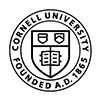Meniscus Transplant (Medial & Lateral)
-
Dr. Garcia’s lecture on meniscus and cartilage transplants
-
Meniscal Transplantation
The meniscus is a cushion of the knee joint. There are two menisci in the knee, medial and lateral. If the meniscus is very badly torn, it can't be repaired and such it needs to be removed by a meniscectomy. This is performed to relieve pain and improve function. Eventually, some patients need multiple meniscus removal surgeries. When most of the meniscus has been removed, this puts the knee at a biomechanical disadvantage.
Lonzo Ball returns to the 2024 NBA season after cartilage surgery.
Cartilage and Meniscus Transplant and Surgical Options
If patients are older, they may just need a joint replacement (either partial or full). If they are very active, they may need an osteotomy versus a meniscus transplant. Generally, patients are less than 50 years old.
A meniscus transplant is matched to the patient's size and replaces the old meniscus. They are not right for everyone, but in select young active patients, they can offer substantial pain relief.
Goals of the Transplant
If you don't have a meniscus, the cartilage in your knee has to cushion it and there is substantially higher pressure inside the knee. This is similar to treads on a tire where it eventually wears out. When this cartilage wears out you develop arthritis in the knee. The goal of this surgery is to restore the biomechanics of the knee with donor meniscus tissue. This prevents the progression of osteoarthritis, improves knee stability and reduces pain in the knee.
The Allograft
This tissue is taken from a recently deceased donor (human) and frozen. While cartilage transplant need to be fresh when implanted. Meniscus can be frozen and implanted up to 6 months after harvest which gives potential candidates more time to prepare for the surgery. The allografts are matched by size using xrays and MRI. With regards to testing, they are tested for all possible communicable diseases and these are not like other body parts as there is no chance of rejection occurring. Additionally, patients don't need immunosuppressants after surgery.
Technique for combined ACL reconstruction with a medial meniscus transplant
Patient Criteria
Overall this procedure is still uncommon unless you visit a specialist in this area. Overall very few surgeons perform this procedure as a high volume of surgeries may only be 10-20 transplant a year. Much of this is due to the strict criteria need for patients to qualify for the procedure. Even moderate amounts of arthritis will not allow patients to be candidates for this surgery. If cartilage defects or alignment issues exist these need to be corrected as well in order to improve survival of the implant.
The criteria for transplant are listed below:
- Pain with activity
- Very active and less than 50 years old
- More than 50% of your meniscus on the painful side has been removed
- Minimal arthritis (less than grade 2)
- BMI less than 35 (ie not obese)
- Stable ligaments and normal alignment
- These can be corrected with other procedures ie osteotomies and ligament reconstructions
-
Dr. Garcia demonstrates his technique for a lateral meniscus transplant using the dovetail technique

-
Step by step surgical video for a lateral meniscus transplant.

The surgical procedure
This surgery involves an arthroscopic procedure and usually only requires a few small incisions as well as a 3 cm incision to insert the meniscus depending on the technique. Generally, this procedure can be performed as an outpatient procedure. Depending on the type of technique bone from the cadaver meniscus is used to embed the meniscus into your shin bone and the meniscus is sewn in with high strength sutures. As innovation continues we have better instruments to improve healing potential and reduce any movement of the meniscus.
Types of Transplants
All soft tissue technique
This involves suture the roots and the body of the meniscus inside the knee. Generally, this has slightly higher failure rates though it is the technically least challenging of the types of transplants
Dr. Garcia demonstrates his cutting edge technique for medial meniscus transplantation
Bone plug technique
This involves leaving 1 cm bone plugs on both roots of the meniscus and these are dunked into sockets in the patients tibia. This procedure has improved success over the soft tissue procedure listed above and is generally used for medial meniscus transplants. The medial meniscus has a wider footprint and such by using this technique you don’t have the same challenges as a slot method with regards to matching and can custom the meniscus and “fit” it better into the patient’s knee. These bone plugs eventually heal into the patient providing better stability for the new meniscus.
Slot technique
This involves leaving a long tube of bone where both roots are connected. This is often done on the lateral meniscus as it has a high healing rate and the lateral meniscus matches tend to be slightly better in terms of size. Slot and bone plug techniques have similar success rates but are generally used for different sides based on the explanation above.
Check out our recent testimonial after ACL, Meniscus and Cartilage Transplant
Dr. Garcia has extensive training in all techniques but will use bone plug and slot technique in a majority of patients.
Complications
Overall complication are low and complete meniscal transplant failure is less than 3%. The most common complications stiffness and incomplete healing. There overall the complications rates can be as high as 20-30% but this is generally a small tear in the meniscus transplant or a new tear in the cartilage. If these occur it usually involves a small arthroscopic procedure to clean the new tear with a short recovery.
Physical Therapy
You will wear a knee brace and use crutches for 6-8 weeks after surgery. This allows the transplant to heal down to the capsule. We start range of motion within a week of surgery
Return to activities: Active and labor-intensive jobs are 3 months of physical therapy before return to work. Return to sports activities ranges from 6-12 months depending on your level of athletics and number of previous surgeries.
-
Check out our scope after medial meniscus transplant 1 year later, well healed and difficult to tell its a cadaver tissue.
-
Second look after lateral meniscus transplant
Outcomes:
The factors below contribute to the success of the transplant:
- Sizing of the transplant
- Health of the surrounding cartilage
- Limb alignment
- Technique used
- Quality of the size match
- The patient's commitment to physical therapy
- Patient health
Meniscus transplants in the right patient can be very successful. Overall failure rates are 15-20% at 10 years and 20-25% at 15 years. They can reduce the risk of arthritis and help delay the need for joint replacement in the right patient. Medial and lateral transplants more recently have seen similar success given new techniques. Some improved rates come when performed in conjunction with an ACL or realignment procedure.
For further information review the techniques, information videos and testimonials on this website.
-
Check out our recent video testimonial after lateral meniscus transplant
-
Video testimonial after 3rd Time ACL Recon and Medial Meniscus Transplant
-
Video testimonial after meniscus transplant in an adolescent with a difficult knee issue
-
Revision ACL, Meniscus Transplant, Cartilage Transplant Testimonial
-
Lateral meniscus transplant with cartilage transplant
-
Video testimonial after a revision ACL, meniscus and cartilage transplant in a young athlete




















